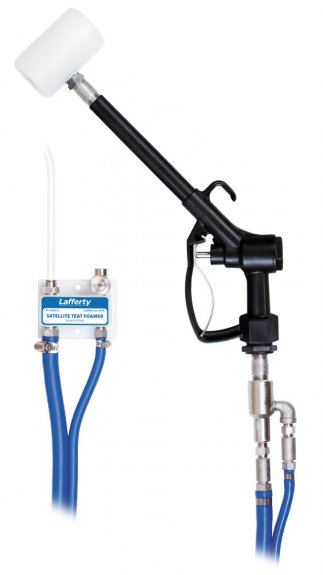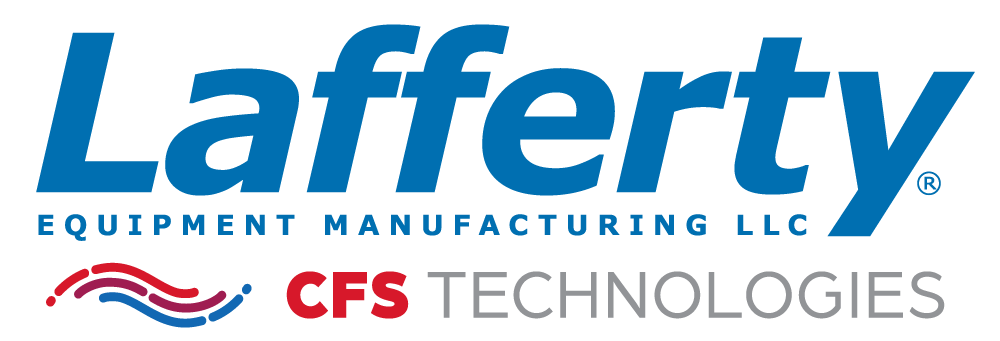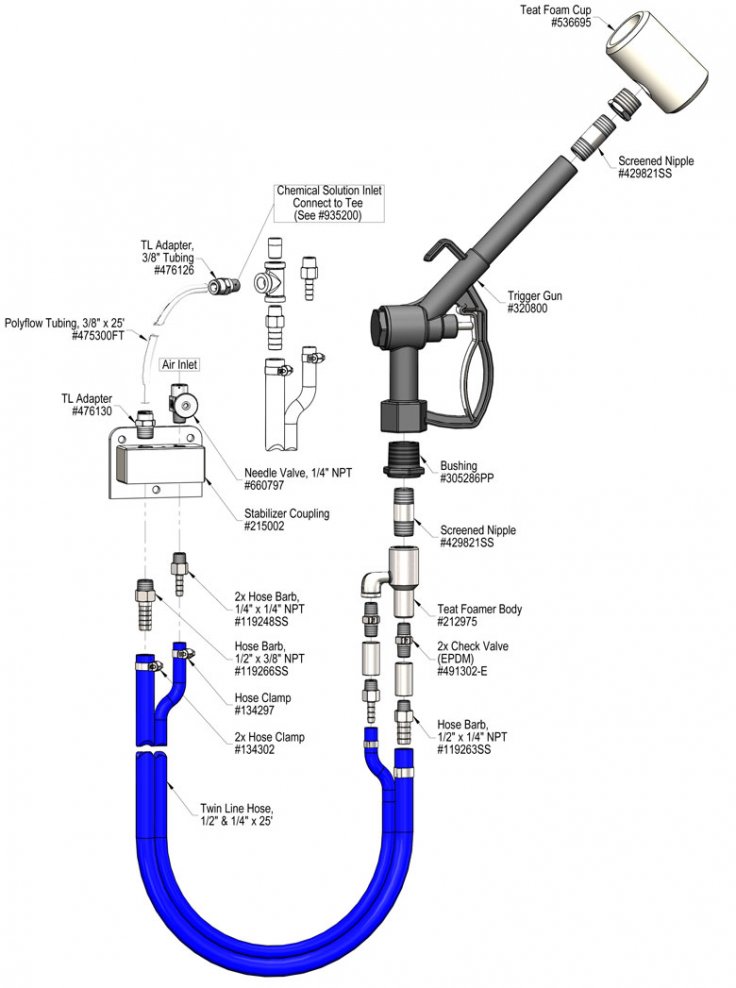| For use with 935200 Teat Foamer System |
Lafferty Equipment Manufacturing, LLC
Installation & Operation Instructions
Model # 935202 · Satellite Teat Foamer
Requirements
Overview
The Satellite Teat Foamer is a foam applicator for foaming teat dips in dairy facilities. Up to 8 Satellite Teat Foamers can be used in conjunction with a Teat Foamer, depending on installation set-up and how many will be in use at the same time. The Teat Foamer is a pump-driven system that uses compressed air to power an AODD pump to draw and pressurize ready-to-use teat dip. The solution flows through the discharge hose to the foamer body where rich, clinging foam is created by injecting compressed air into the solution. A low volume of clinging foam is then applied using the heavy-duty machined polypropylene teat foam cup.


